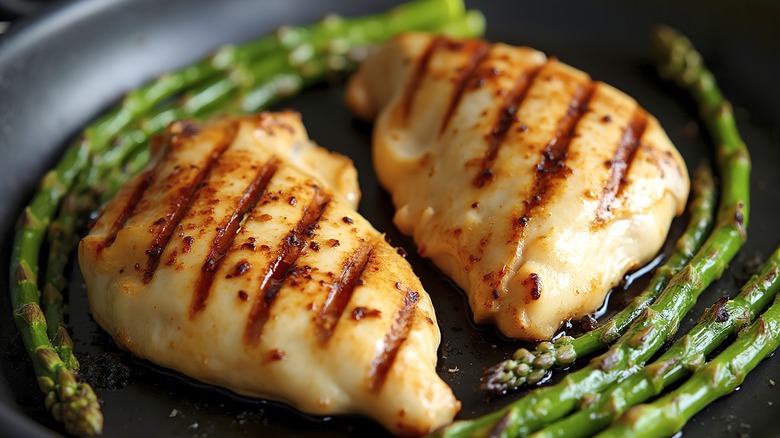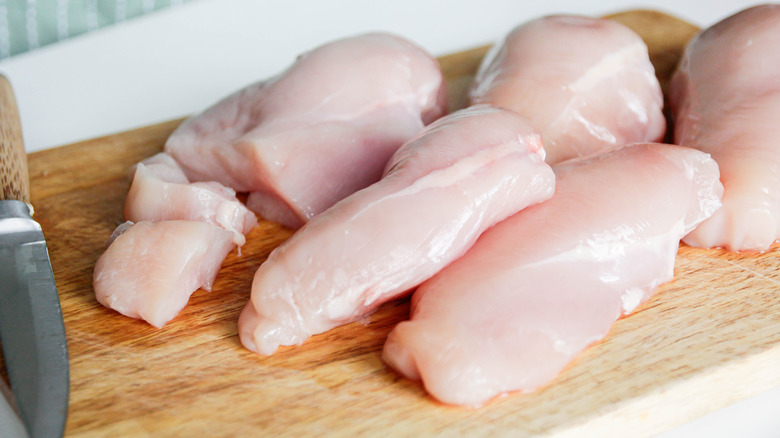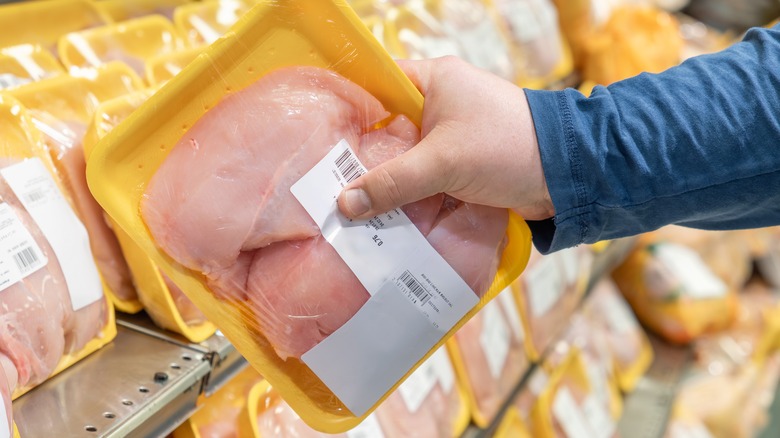One Major Grilled Chicken Mistake Starts At The Grocery Store
Grilled chicken sounds simple until it turns out bland or rubbery when you're expecting smoky, juicy deliciousness. People often blame their grill or the marinade, but the problem usually starts way earlier — at the grocery store. The quality of chicken you buy sets the tone for how well it's going to cook, how it's going to taste, and whether it stays juicy or dries out the second it hits the heat.
You might think you can just head to the store and grab whatever pack is on sale or has the best sell-by date, but that's a common mistake people make when grilling chicken. There are signs you can look for that tell you whether you're buying low-quality chicken. Knowing what to look for can save you a lot of disappointment at dinner.
A lot of pre-packaged chicken is water-packed, overly processed, and pumped full of sodium and preservatives to extend shelf life. This can mess with both flavor and texture once it's on the grill. Better quality chicken has a more natural flavor, a better bite, and doesn't leave you guessing if you overcooked it. If grilled chicken is part of your regular rotation, taking a few extra minutes to pick the right pack will make all the difference. You can't do much for dry, flavorless meat once it's cooked, no matter how many unique ways you try to dress it up.
Low-quality chicken ruins grilled results
Cheap chicken is often processed in ways that make grilling harder than it needs to be. Many budget brands inject the meat with brine or sodium solutions to keep it looking plump in the package. This might make it look appealing raw, but on the grill it leaks water and ends up steaming instead of searing. That moisture loss leads to a rubbery texture, gray grill marks, and a weird sponginess that's altogether gross.
Lower-quality chicken (especially the kind from fast-growing commercial breeds) tends to have muscle fibers which aren't fully developed. This can make the meat noticeably tougher. Some of these birds are bred to gain weight so rapidly they develop conditions like "woody breast," which gives the meat a stiff, stringy texture.
Toughness often goes hand in hand with dryness. Chicken that's been highly processed usually has poor water-holding capacity, meaning it loses moisture quickly when cooked, which directly impacts both texture and flavor. Some of these birds develop muscle issues that replace lean tissue with fat deposits in strange patterns, which can make the chicken taste off or just sort of blah. Rather than enhancing flavor, the fat disrupts the natural balance of the meat, leaving it less satisfying than you'd expect.
As you can see, there are a lot of ways it can go wrong. Good chicken costs a bit more, but it behaves better on the grill. The meat stays juicy, takes on marinades (which are an absolute must) more evenly, and finishes with actual flavor. If you're investing time in cooking, it's worth spending a couple extra bucks.
How to pick high-quality chicken at the store
You don't need a culinary degree to spot good chicken — you just need to know what matters. Start by checking the label. Look for air-chilled chicken instead of water-chilled. It holds its natural juices better and won't taste waterlogged after cooking. Also, avoid anything that says "enhanced with broth" or "contains up to X% solution." That's code for injected additives and artificial moisture, which work against you on the grill.
Check the color and shape next. Fresh chicken should have a consistent pink color with no bruising or dark patches. Also, try to find pieces that are fairly uniform in thickness. This makes grilling way easier and helps avoid dried-out edges.
Look for third-party certifications, too. Organic, free-range, or pasture-raised labels usually mean higher standards for how the chicken was raised. That often leads to better flavor and texture. You don't have to buy the most expensive pack on the shelf, but learning to spot the right signs can help you cook chicken that's worth eating.


